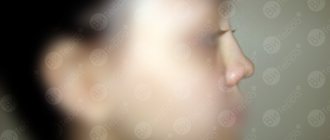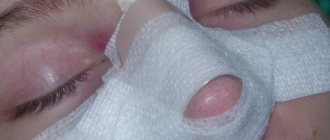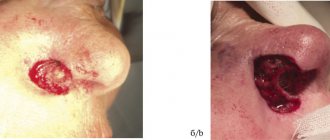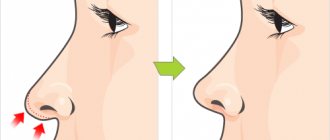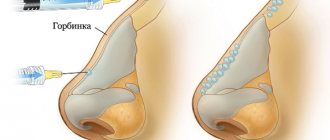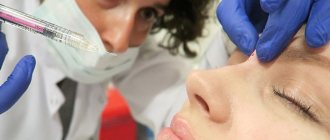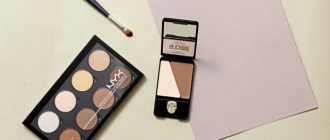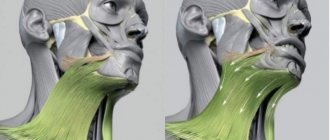06.05.2015
Removal of a hump is one of the most common requests with which people turn to a plastic surgeon.
A hump is a structural feature of the dorsum of the nose, an osteochondral protrusion that is formed as a result of a hereditary predisposition, injury, or unsuccessful surgery.
The elimination of a hump is often performed in conjunction with correction of the nasal septum, plastic surgery of the tip, and resizing of the nose. Such operations make it possible to simultaneously eliminate various functional disorders: restore nasal breathing, prevent the development of otolaryngological diseases, etc. From an aesthetic point of view, surgical straightening of the dorsum of the nose, especially with a pronounced defect, is one of the most obvious manipulations when performing rhinoplasty. Elimination of this small aesthetic defect “opens” the face, emphasizes its individual characteristics, and makes the features more attractive and harmonious, regardless of the patient’s age.
Nowadays, surgical straightening of the nasal bridge can be performed on adult patients at almost any age. Older people, for example, tend to have bones that are more pliable and easier to surgically manipulate than those of younger people. However, it also happens the other way around. This largely depends on the individual characteristics and condition of the body. It is also important to understand that the skin of the nose is not trimmed during plastic surgery. In the postoperative period, it gradually decreases and is redistributed independently in accordance with the new form of the osteochondral frame. Therefore, when planning an operation, special attention should be paid to the type and condition of the patient’s skin. Thus, aging skin with reduced elasticity contracts more slowly, and thick, porous, oily skin is more susceptible to swelling and scarring. At the intervention planning stage, the doctor necessarily takes into account many factors, including the patient’s age, gender, skin type, as well as anatomical features, the nature and degree of deformation of the nasal dorsum.
How to remove a nasal hump
To straighten the back of the nose and give it the desired shape, it is necessary first of all to remove the bone and cartilage tissue that forms the protrusion of the hump.
In modern rhinoplasty, two different approaches to surgical intervention are used to correct the shape of the nose - surgery with closed (endonasal) access to tissues and open access. The main difference between these methods is the presence or absence of external visible incisions. So, with an open approach, the surgeon dissects the columella - a column of skin that separates the nostrils and makes small incisions at the base of the wings of the nose, peels off the soft tissue from the nasal bones and cartilage, exposing the frame, and then begins to work on the shape of the back.
With the endonasal method, to remove excess cartilage and bone tissue, a surgical instrument is inserted through small incisions in the mucous membrane of the nasal passages. Performing an operation in this way requires a lot of experience from the surgeon, which will allow it to be carried out with pinpoint precision, without injuring the surrounding tissues or leaving marks.
The operation is performed under general anesthesia.
Stabilization of the nasal bridge and improvement of breathing - the “Spreader graft” technique
To fix the nasal septum, widen the nasal passages and improve nasal breathing, I use grafts.
Most often, during primary rhinoplasty, nasal septum cartilage is used for grafts. If rhinoplasty has already been performed and there is not enough septal cartilage, auricular or costal cartilage is used.
Cartilage of the nasal septum, auricle, costal
Two strips of cartilage must be cut out to form grafts.
Grafts to improve breathing
Grafts are placed and sutured between the septum and the upper lateral cartilages.
Stages of the operation
- Skeletonization is the exposure of the osteochondral frame, including dissection and detachment of the skin and underlying soft tissues.
- Excision of the cartilaginous components of the hump - sections of the upper lateral cartilages and the nasal septum.
- Removal of the bone component of the hump, during which the protruding part of the bone frame is cut off. (Experienced doctors who have a high level of surgical technique often remove both parts of the hump at once - both bone and cartilage, since removing it in parts in most cases does not have significant advantages).
- Lateral (side) osteotomy (cutting and mobilization of bone tissue). Since after removing the protrusion, a wide and flat zone is formed in the dorsum, to achieve a beautiful shape it is often necessary to narrow the bony pyramid of the nose. An osteotomy is performed in the lower region of the nasal bones in order to make them mobile, move them inward, towards the septum, and as a result, both the dorsum and wings of the nose are narrower and more graceful. Lateral osteotomies also prevent the risk of developing “open roof” syndrome - subsequent fusion of the skin with the mucous membrane of the nasal cavity, which, in addition to a noticeable external defect, can lead to significant functional disorders, including increased cold and pain sensitivity of the nose. If necessary, for example, if the nose does not need to be narrowed or if the patient has thin skin, cartilage implants are used to cover all the irregularities and make the dorsum of the nose perfectly straight.
- At the very last stage of the operation, the skin is placed back on the frame of the nose in such a way as to ensure the tightest possible seal.
After the operation, cotton swabs that support the shape are placed in the nasal passages, and a rigid splint or plaster cast is placed on the surface of the nose, with the help of which the elements of the nasal frame that have undergone correction (bone and cartilage) are fixed in a new position.
Anatomy of the nose
The visible part of the nose consists of: the back, wings, tip and nostrils.
Anatomy of the visible part of the nose
The internal structure of the nose is a little more complex.
The nasal bone consists of 2 segments, connects in the middle and forms the bridge of the nose in its upper part.
The cartilage continues the nasal bone, forming the tip and wings of the nose. The septum is a cartilaginous plate that internally divides the nose into two halves.
The tip of the nose meets the columella , which forms and separates the nostrils. It consists of skin and cartilage.
If you hold the tip of your nose, you can move it in different directions. The cartilages of the nose are quite mobile and plastic.
Recovery period
The recovery period and various restrictions associated with it usually last from several months to a year. All this time, swelling and the breathing problems it causes may persist. Excessive physical activity, going to the beach, visiting swimming pools, baths, saunas, hot baths, and wearing glasses are contraindicated for the patient. Air travel is also not recommended for the first month after surgery. It is necessary to carefully protect the nose from any mechanical influences, since tissues that have not completely recovered can be easily damaged.
With minor swelling, the new nose appears quite well almost immediately after the operation, but the patient will be able to observe its final shape no less than six months to a year after complete healing and tissue restoration have occurred. The final result lasts for life and does not require any supporting procedures from the patient.
Stabilization of the nasal tip - “Extended septal graft” technique
To stabilize the tip of the nose, I again use a nasal septum graft. The essence is the same as with grafts to improve breathing.
The graft is placed between the cartilages of the nasal wings and sewn to the septum to add strength.
Nasal tip stabilization graft
Installation of this graft helps to securely fix the tip of the nose to avoid changes in its position in the future. With age, the soft tissues of the nose begin to sag and the nose ages.
Aging nose
If necessary, I correct the wings and tip of the nose.
Possible complications of the operation
Any surgery carries some risk. Surgical removal of the nasal hump in this matter is also no exception. If plastic surgery is performed by a qualified surgeon, their risk is reduced. However, when planning the operation, all the nuances should be taken into account. The risks are mostly associated with the individual structural characteristics and reactions of the patient’s body. Such complications most often include infections, nosebleeds, or allergic reactions to medications.
In addition, it is extremely rare that secondary nasal deformities may occur as a result of an unsuccessful operation, for example:
- A saddle-shaped back (“boxer” nose) or, on the contrary, excessively high due to an erroneous choice of the level of protrusion truncation.
- Collapse of the bone frame and, as a result, disruption of nasal breathing caused by excessive movement of the nasal bones.
- The “open roof” syndrome with incomplete osteotomy, in which the normal pyramidal shape of the nose turns into a trapezoidal one (with an excessively wide dorsum), gives the face an unaesthetic appearance, causes headaches and significant physical discomfort.
- Discontinuous or irregular lines of lateral osteotomy, which over time, as postoperative swelling subsides, become pronounced and begin to visibly appear above the surface of the skin.
Septoplasty
Septoplasty is an operation to correct the nasal septum.
For most people, the nasal septum is initially uneven. Even if you think you have a perfectly straight nose, your septum may be slightly shifted, bent or pinched. Because of this, nasal breathing is limited.
Nasal septum
Septoplasty helps improve nasal breathing and get rid of various problems caused by a deformed nasal septum:
- chronic runny nose
- nasal congestion
- snore
Contraindications for surgery
Contraindications for removing a nasal hump are the same as for other procedures during rhinoplasty.
- Acute inflammatory diseases of the upper respiratory tract
- Acute and chronic dermatological diseases of the face
- Individual allergic reactions to certain medications
- The young age before the final formation of the facial skeleton is usually 18-20 years.
- Bleeding disorder
- Severe general diseases
- Pregnancy and lactation period
Back to list
Link copied successfully
Reviews about hump rhinoplasty
Reviews from social networks and instant messengers
Video reviews
Independent reviews
Anonymous
I would like to express my deep gratitude to Alexey, even though he did not operate on me. I have a young daughter. Several years ago she had a serious accident, recovered, everything was fine, she was cured. But something terrible happened to her nose (during the accident there was a fracture and apparently something went wrong). The girl is still very young, but she has become so insecure and downtrodden. I kept saying that everything was fine, but I see it. I’ve already taken her to psychologists, but I see that it’s not helping (now I don’t understand what I was thinking, I can’t imagine how a psychologist would help). I started thinking about plastic surgery about a year ago, but for some reason I thought it was a pleasure only for the rich. I started looking at prices, doctors in the city and found Alexey. Moreover, I noticed him in some program, and there he was described like this! When I told my daughter about the idea, she burst into tears with joy, and we almost immediately went to the reception. Everything went very well! Alexey is a very sensitive, understanding and competent specialist. Thank you so much for restoring the girl’s self-confidence!
Diana
I always wanted to make my wide nostrils a little smaller, and I was terribly complex about this. An opportunity arose, including a financial one, and only thanks to Alexey did I regain confidence in my beauty. A knowledgeable doctor, polite and prudent staff at the Line clinic. The operation went quickly, unlike the preparation for it, here as everywhere else - tests, examination, consultations. After a month, the seams were completely worn out, and did not become inflamed, as in some people. Now I’ve forgotten that I once suffered with my nose. I recommend
https://www.tecrussia.ru/plasticheskie-hirurgi/krasnodar/2291-dikarev.html
Anonymous
In April I had rhinoplasty with Dikarev. The operation was successful, then she was under the supervision of medical staff for 2 days. Discharged for 3 - then a week of rehabilitation. I thought it would take longer. The doctor is a professional. You can really trust your face and not be afraid that it will warp))
https://23med.ru/doctors/plastic-surgeon/dikarev-aleksey-sergeevich
View all reviews
Causes of hump appearance
This feature may be congenital or result from an injury. Often, a hump is a feature of a particular nationality. For example, the classic Greek nose is straight and even, the Roman nose is refined and with a small hump. For people of the Mongoloid race, a small and flattened nose is common. But the typical Caucasian nose is characterized by an expressive and noticeable hump.
A hump is often characteristic of people with a narrow nasal septum: in these cases, it is designed by nature to ensure full breathing. Today, a hump is not such a big problem, because it can be removed thanks to the capabilities of modern aesthetic surgery.
Non-surgical plastic surgery
Today, a hump on the nose can be removed not only through surgery. Non-surgical methods are also widely used.
Among non-invasive techniques, injection plastic surgery is the most popular. Its essence lies in the subcutaneous injection of fillers to create additional volume in the desired area.
The most effective are gels based on hyaluronic acid. They are hypoallergenic, well accepted by the body and absolutely safe. Their only disadvantage is that the result lasts from 6 months to one and a half years.
With the help of fillers, the bridge of the nose is raised to the level of the top point of the hump. This technique, compared to traditional rhinoplasty, has a number of advantages:
- Local anesthesia. The injections are easily tolerated. It is enough just to pre-treat the skin with an anesthetic gel.
- Minimum time. Correcting the nose with injections takes no more than 20-30 minutes. Immediately after this you can return home.
- Lack of rehabilitation period. In fact, recovery takes 48 hours, during which the puncture wounds are completely healed. Already on the second day you can safely go out and go to work.
- Low risk of complications. If the procedure is carried out correctly, they usually do not occur. There are not even bruises or swelling left.
- Temporary result. If you do not like the effect, you can wait until the gel is completely absorbed, or introduce hyaluronidase to speed up this process.
The main disadvantage is that only a minor external defect can be corrected in this way. If the nasal septum is deviated or there are medical indications for correction, traditional surgery cannot be avoided.
Most contraindications for injection correction of the nasal hump coincide with those for rhinoplasty. Therefore, you will still have to be examined before the procedure.
One cannot exclude such a thing as individual intolerance to hyaluronic acid. People prone to severe allergic reactions must first do a test.
Features of massage for reducing and correcting the nose
The so-called massage, which helps to correct the shape of the nose, actually refers to face-building. This is a technique aimed at correcting facial defects without plastic surgery. Most of the exercises were developed by American cosmetologist Carol Maggio. She tested her complex on herself and proved its effectiveness. The essence of face building is to train the facial muscles and improve blood supply to the head. With the help of regular exercises, you can correct your appearance, get rid of wrinkles, and even out the oval of your face.
Performing exercises to change the shape of the nose is prohibited for people suffering from neck problems and herpes. It is advisable for pregnant women to check with their doctor whether such loads are acceptable for them.
What defects can be corrected?
Appearance largely depends on the condition of the muscles. By giving them the right load, you can achieve a beautiful figure and smooth out imperfections in your appearance. The same is true for the face. Regular exercise can significantly affect the shape of your nose.
Exercises are designed to correct such defects as:
- considerable length;
- hump;
- asymmetry;
- big nostrils.
But correcting your shape is not the only advantage of Facebook building. It also strengthens the facial muscles and removes fat. Another positive consequence of regular exercise is the disappearance of facial wrinkles in the nasolabial triangle.
How to properly massage your nose
All exercises should be performed in a relaxed state, monitoring your breathing. This is especially true for older people and those who suffer from hypertension. If a headache occurs during a massage, the session should be stopped immediately. Since there will be no trainer nearby to monitor the correctness of the technique, it is advisable to practice in front of a mirror.
For greater effect, half an hour before performing gymnastics, apply cream or ointment to your face. This will prevent your fingers from slipping, and if you prefer products with collagen, it will further improve the condition of your skin.
For those who have never practiced face building, it is advisable to start with fewer repetitions. Otherwise, the muscles will receive too much stress, and you will have to walk for a while with a swollen and red nose.
Course duration
Regularity is the key to success. To achieve the desired appearance, a set of exercises must be done several times daily. The result will be noticeable in a few weeks. After this, the frequency of execution can be reduced, but you shouldn’t give up face building completely. The nasal muscles are small in size, so they are easy to train, but for the same reason, without regular exercise, they quickly relax.
How to choose the right glasses?
To choose glasses, you need to consider several factors:
- type or shape of face;
- individual features of appearance - large nose, wide eyebrows, deep eyes, etc.;
- skin and hair color;
- general clothing style;
- an indicator of visual acuity in the presence of a refractive error.
We’ll talk about what glasses are suitable for girls and men with big noses later. First, we will describe the rules for selecting optical products according to the shape of the face. This parameter is one of the most important from the point of view of aesthetic perception.
Here's something else interesting
Surgical treatment of bulging eyes - Olivari operation
How to remove a double chin and tighten your neck?
How to remove bags under the eyes? Lower blepharoplasty or fillers.
How to get rid of jowls? Lifting, SMAS-lifting, MACS-lift.
What glasses to choose if you have a long nose?
There are many epithets that are used to describe a person's nose. These include: eagle, fleshy, Greek, Roman, hawk, upturned, etc. Men, as a rule, are not concerned with this. This problem often worries women. Many of them believe that a woman's nose should be neat, and not large, long or wide. Therefore, there is a desire to change your appearance. How to use glasses to make your nose attractive and hide its large size? Let's find out what the professionals say about this.

